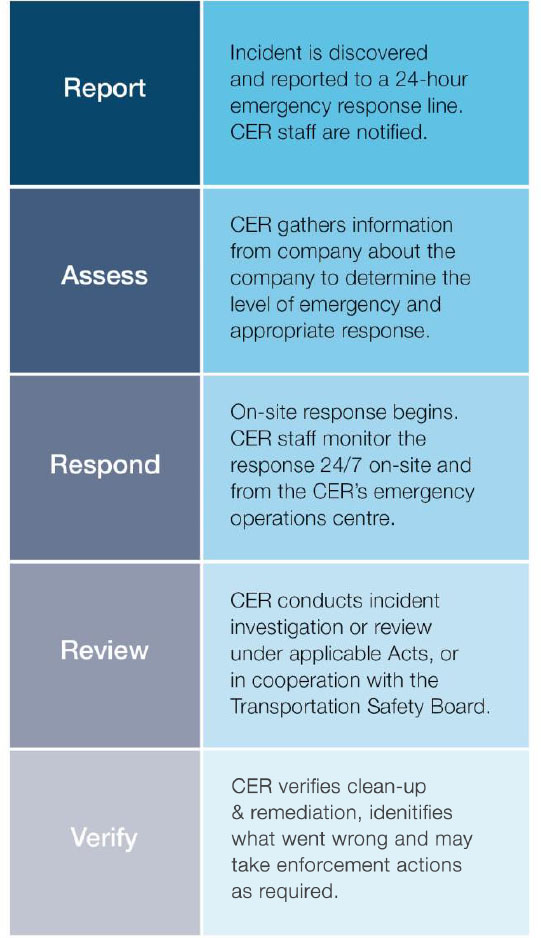
Emergency Preparedness
Fact Sheet: Emergency Preparedness [PDF 344 KB]
Emergency situations may occur at any time and at any place for activities we regulate. It is essential that the Canada Energy Regulator (CER) be prepared to operate effectively during an emergency to ensure public safety and a swift response. As the key overarching federal legislation that applies, the Emergency Management Act sets out the leadership role and responsibilities of the Minister of Public Safety and Emergency Preparedness, including coordinating emergency management activities among government institutions and in cooperation with the provinces and other entities. The federal government, provinces and territories developed an Emergency Management Framework for Canada which establishes a common approach for a range of collaborative emergency management initiatives in support of safe and resilient communities.
The CER works in collaboration with other federal government institutions, provincial and territorial emergency management organizations, first responders, other stakeholders and communities in support of the overall emergency management system across the country.
Our regulatory expectations
The Under the CER Act, regulated companies must have an emergency management program that anticipates, manages and mitigates pipeline incidents of any size and duration should they occur. This requirement is fundamental to operating a pipeline in Canada. The CER monitors and enforces compliance with emergency management program requirements throughout the life of a project.
CER Emergency Response
The CER’s top priority in any emergency is to make sure people are safe, and that property and the environment are protected. In the event of a release, the CER requires a company to take any measures required to stop the flow of hydrocarbons, manage the incident, clean up the damage and ensure appropriate environmental remediation.
As the lead federal regulatory agency during a response to an emergency in our jurisdiction, the CER will:
- Monitor, assess, and compel additional actions by the responsible party if necessary
- Participate in Unified Command
- Integrate its expert staff into the incident management response structure
In the Incident Command System, a Unified Command organization consists of the Incident Commanders from the various jurisdictions or organizations operating together to form a single command structure.
Liability
CER-regulated companies are responsible for all costs associated, with a pipeline or facility incident. The CER has the authority to order a company to pay others that have incurred costs or expenses in relation to a spill. CER-regulated companies are accountable to respond effectively to any incident with the highest regard to public safety and environmental protection. Should a company be unable to respond appropriately, the CER will use legislated authority to assume control of the incident.

Important things for you to know:
Pipeline Emergency Management Programs must:
- Use an all-hazards approach to planning (e.g., consider water intakes, water courses, flooding, landslides).
- Evaluate and manage risks associated with all hazards.
- Include input from other potentially involved agencies the development of, an emergency procedures manual.
- Maintain a current emergency procedures manual.
- Have procedures in place to safely control or shutdown a pipeline.
- Conduct an assessment of response equipment.
Where to go for more information
- CER Website
- Phone: 403-292-4800/Toll Free: 1-800-899-1265
- Follow us on Twitter @CER_REC
- Canada Energy Regulator
210-517 10 Ave SW
Calgary AB T2R 0A8
- Date modified:
